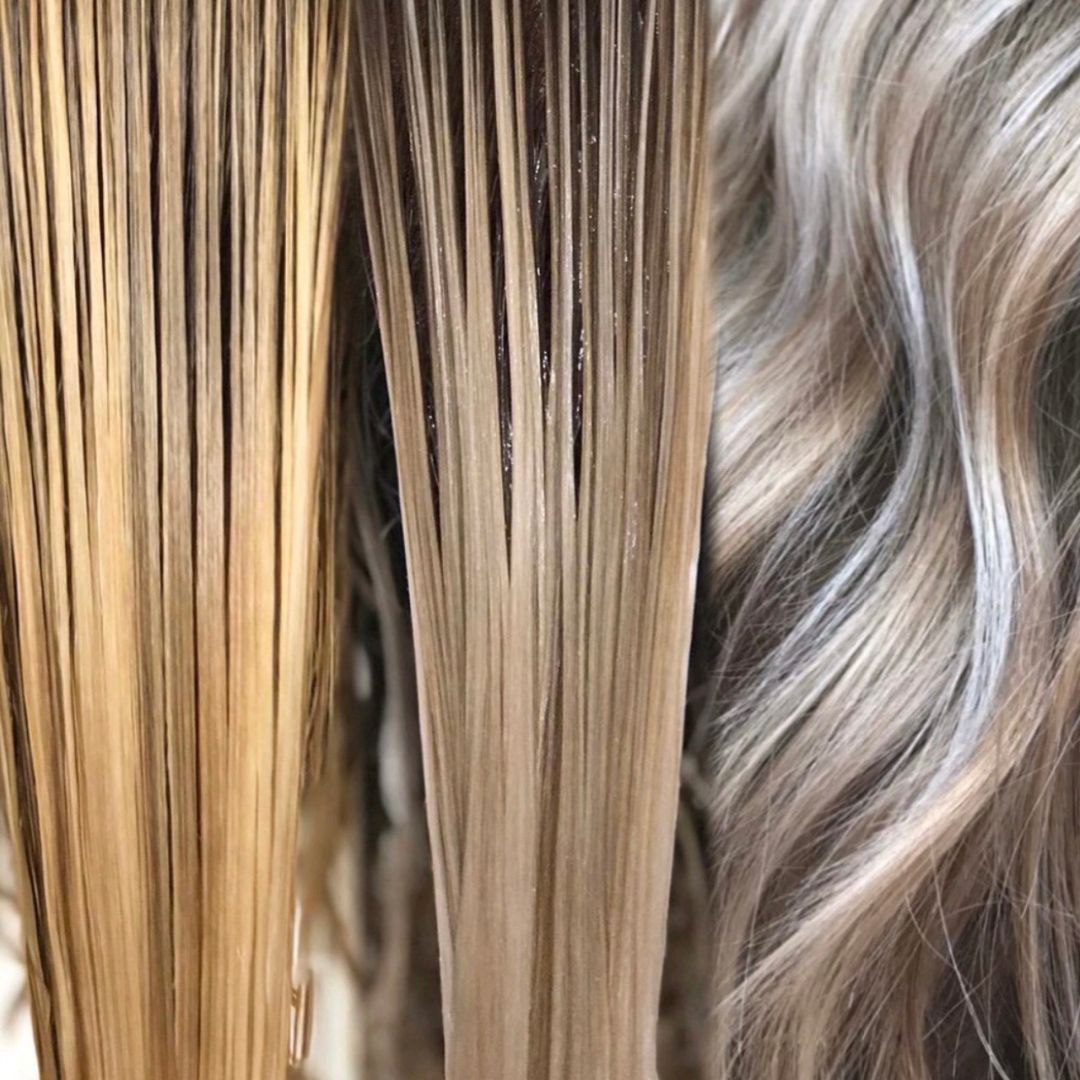

In other words, without color theory, you’re formulating blind!
Color theory is based on the color wheel, which should be one of your most used tools as a stylist. By familiarizing yourself with the color wheel and becoming as strong as possible with color theory, you’ll set yourself up to deliver amazing results time and time again.
With this in mind, below is a high-level overview of color theory to help you get started, as well as tips you can use to master the craft.
The Basics Of Hair Color Theory
Color theory is a term used to refer to the science of how color works. It explains what happens when you add multiple colors together, or when you remove a tone or hue from a color.
In hair, color theory means much the same thing, only applied specifically to, well, hair. By understanding color theory, you can preemptively understand what your client’s hair will look like before you perform a service or treatment—for example, how their original canvas will mix with the colors you introduce, or what colors and tones will be left behind after you lift, etc.
This understanding will allow you to:
- Manage your client’s expectations
- Create a plan to get them from their starting point to their desired end goal
- Consider alternatives in the event that they change their mind
- Consider possible pitfalls or consequences to your treatment, such as blorange hair.
Learning about complementary colors is also important for balancing skin and eye tones with hair color. These can be found directly across from each other on the color wheel. This will greatly increase how you start to formulate glosses and know the difference between when warmer tones look better on someone vs cooler tones. This is something that is often forgotten when we are simply looking at hair alone.
Tips For Mastering Color Theory
1. BECOME FRIENDS WITH THE COLOR WHEEL.
Each picture that someone brings you as inspiration for their hair has a tone to it. In order to achieve that tone, you have to formulate properly, adding just the right color to the base canvas. In order to formulate properly, you have to understand color theory. And in order to understand color theory, you have to understand the color wheel.
Simply put, you should reference the color wheel every step of the way, from your hair consultations all the way to your actual formulation. Whether you are doing gray coverage, tonal shifting, tonal balance, glossing, tint backs, melting, smudging, or anything else, you need this basic understanding.
2. TAKE YOUR TIME.
In learning color theory, it’s important to go slow and go over each piece as many times as you need to truly “get” it. You will most likely make mistakes, but everyone does. Try everything you're questioning out on a mannequin or swatches. This helps to avoid mistakes on real clients.
3. DON’T FORGET THE HAIR’S UNDERLYING PIGMENTS.
All hair has underlying pigments that will affect the final outcome of your formula. And yet, analyzing pigments is something that a lot of stylists forget to focus on. This can wreak havoc on your end results and leave you with a less-than-happy client.
When you understand what these are and how to combat them, each formulation will come out better. This goes for all scenarios from lifting and analyzing raw lift to avoiding brassiness in root colors. Taking underlying pigment into consideration will make or break your finish.
4. NEVER STOP LEARNING.
You will never stop learning and re-learning color theory. There will simply always be a new situation that challenges you and requires you to learn something new. Never be afraid to go back to your roots and go over it all again. Keep a color wheel in the back room to remind yourself of the basics! You will be surprised how many times you look at that chart. Once you feel like you’ve mastered the basics, consider investing in more advanced education that allows you to dig even deeper and become even better at what you love.
Have you been struggling with your confidence when it comes to formulation? Building confidence in this area is the key to becoming a better stylist, empowering you to deliver the results that your clients are looking for. Sign up for the COLOR LAB SERIES with Christine, where you'll learn the fundamentals of color theory and real, tactical skills that will allow you to formulate with the confidence that you need!
